Affiliate disclosure: This post may contain affiliate links. Please see our Privacy Policy.
Willow bark has been used for centuries as a natural pain reliever. It contains salicin, which was later synthesized and is the active ingredient in aspirin. It’s reputed to relieve pain without the stomach upset chemical aspirin causes, and it’s easier on the liver too.
All willow species contain some amount of salicin, so it’s easy to find a tree in your area for making natural aspirin.
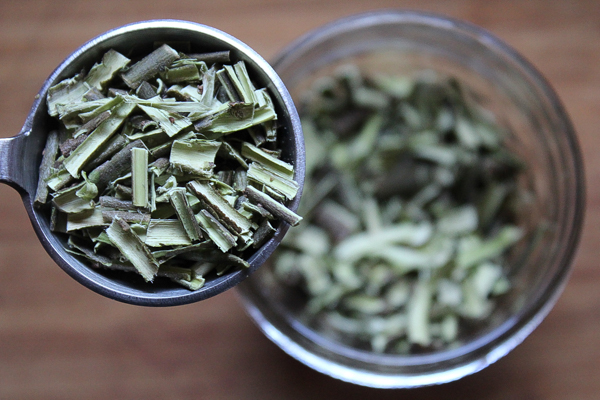
Identifying Willow
There are more than 300 species of willow, and each one is slightly different. They all contain salicin in varying amounts, as the family name Salicaceae suggests.
Willow comes in both trees and small shrubs. In Central Vermont, small willow shrubs are common just about anywhere with poor drainage.
We planted quite a few willow native shrubs in areas where we have standing water in the spring. They’re known to be highly evaporative, and they can help dry out land that’s waterlogged.
They’re easiest to identify in the early spring when they put out tiny fluffy catkins. They pop before leaves enter the landscape, and their glowing white/yellow color helps you pick them out of an otherwise brown landscape pretty easily.

Uses of Willow Bark Aspirin
Willow bark can be used for all the same purposes as traditional aspirin. It reduces pain and fever and acts as an anti-inflammatory. In one study, willow bark was shown to be as effective as Ibuprofen in treating low back pain.
Other studies have shown it to be an effective treatment for osteoarthritis. The standard dose in both of these trials was 240 mg of salicin per day.
It’s tricky to get an exact dosage with homemade willow bark aspirin because each tree is going to contain different amounts. If you’re looking for precise dosage, go with a pre-made willow bark capsule.
Harvesting Willow Bark
Willow bark is foraged in the early spring, just as the plants are breaking bud. As the sap rushes up to create new leaves, the inner bark is more pliable, and it’s easier to separate the bark from the wood.
Willow bark can be harvested directly from the trunk of the tree, but be aware this causes damage to the tree, and may cripple or kill a willow. It’s always important to think of the ethical implications of your actions when wild foraging, and consider whether or not you can accomplish the same thing by gentler means.
The Herbal Academy’s Botany and Wildcrafting course is a great resource for beginning foragers just learning the ropes of ethical wildcrafting, and they note,
“Many people assume that it is ethical and sustainable to harvest from the trunk of a living tree. However, when considering the reality that you are creating an open wound that can introduce disease or cut off the circulation of the tree’s food and water, it starts to sound like a really bad idea.”
Harvesting too much can cause the tree to die, and even small amounts can open the tree up to disease and deformity. Trunk harvesting should be limited to survival situations, or in cases where the tree has just fallen from a storm.
Luckily, for most willow species, it’s not necessary to harvest from a large trunk. Many have scrubby growth habits, and the native willows on my land look more like bushes than trees. Harvesting bark from small branches is actually easier anyway, and the bark can be stripped away with a pocket knife.
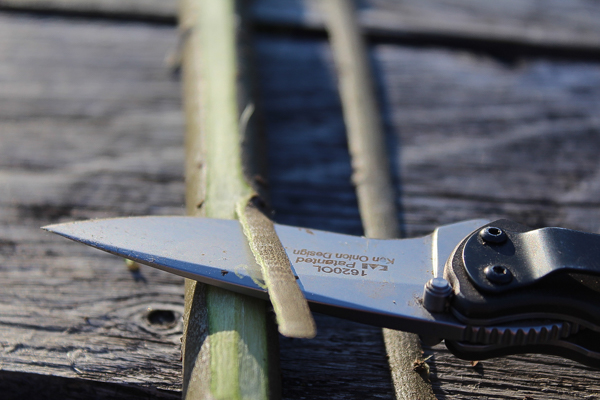
When harvesting from the trunk, you have to pull away the outer bark to get access to the medicinal inner bark.
On small branches, the outer bark is very thin and can just be incorporated into the medicine.
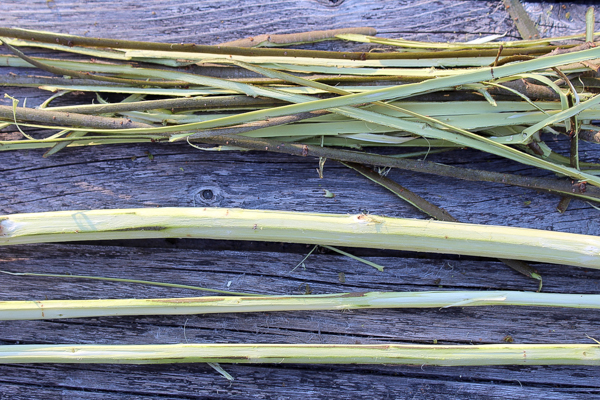
Willow Bark Tea
The most common way to take willow bark aspirin is as a tea. The bark can be used fresh if it’s just been harvested, but more commonly it’s dried for later use. Either way, start by boiling water in a pot.
Dried willow bark can be cut or broken into chips so it’s easier to measure. Add about 1 tablespoons full of bark chips for every cup of water. Boil the bark for 10 minutes, and then remove it from the heat and allow it to steep for about 30 minutes.
In that initial boiling phase, some of the water will cook off and then more of the water will absorb into the bark. If you want 1 cup of finished tea, start with 2 cups of water and 2 tablespoons full of willow bark.
Once it’s finished steeping, go ahead and drink it. It’s bitter, but not intensely so. I think willow tastes a bit like a hoppy beer. Pleasantly medicinal, but not over the top.
If you have trouble with bitter flavors, a willow extract is a better way to take willow bark.
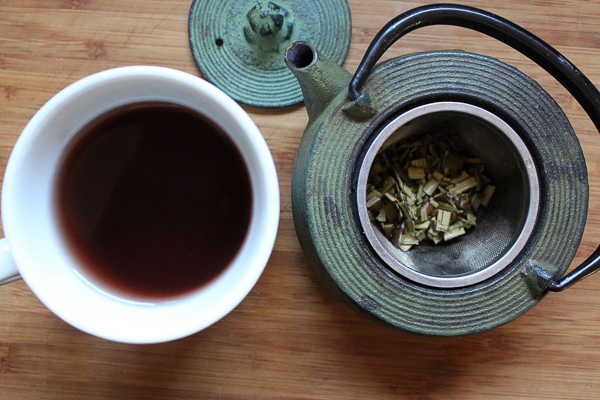
Willow Bark Tincture
The best part about a willow bark extract is that it’s ready to go. Once the bark is harvested in the early spring, it can be kept as an extract all year and used whenever it’s needed.
Other methods, like willow bark tea, require boiling water and steeping the dried bark. With an extract, all you need is a few drops and you’re ready to go.
An extract of willow bark, known as a tincture, can be made by steeping the herb in alcohol.
To make a willow bark extract using the folk herbalist method, start by packing a jar about 2/3 full with willow bark. Cover the bark completely with a neutral alcohol such as vodka. Fill the jar to within an inch of the top and then cap it.
Give it a shake, and store in a cool dark place for a few months. Shake it anytime you think of it.
Once the extract is complete, strain out the willow bark and store the tincture in amber dropper bottles. Total salicin content will vary in homemade willow bark extract, but you can buy standardized extracts here if you’re hoping for an exact dose.
Willow Bark Extract
I love the idea of a convenient tincture that’s ready to go when you need it, but I’m not so keen on the alcohol part. When I’ve got a headache, the last thing I want is a shot of vodka, even if it is medicinal.
You can make an extract using vegetable glycerine, and there are glycerine tinctures available on the market. I just can’t get past the taste.
Plenty of people find it inoffensive, and it has a natural sweetness, but I can’t stand it. I’d rather drink vinegar.
A willow bark extract using raw apple cider vinegar has the benefit of being probiotic, and it can be taken straight or made into an oxymel by adding in a bit of raw honey. I make an elderberry oxymel every year to help keep my family healthy, and a willow oxymel might be just what the doctor ordered for headaches and fever.
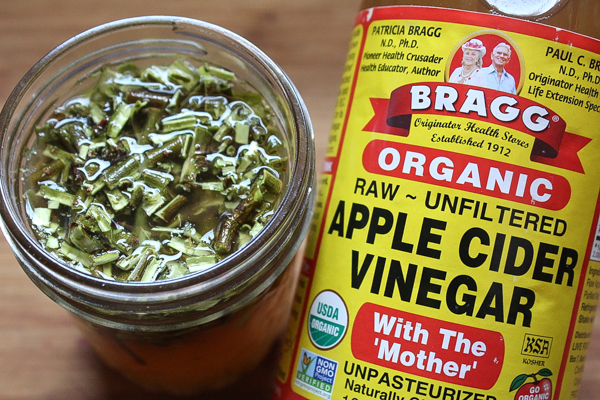
Willow Bark Capsules
If you’re able to harvest just the inner bark, it can be dried, ground and put into capsules. Your homemade capsules won’t be standardized like purchased capsules, but they are convenient for quick use. Unlike a tea, you don’t have to wait nearly an hour for it to cook and steep.
Once the willow bark is ground, use a capsule holder to fill empty gelatin capsules. A tiny spatula can help with this delicate work. Honestly, filling capsules is fiddly and frustrating work in my opinion.
I’m willing to put the effort into foraging willow, but I don’t have the patience for stuffing it into capsules. I’ll stick with tincture and tea.
Willow Bark Dosage
Multiple studies have shown that chronic conditions are greatly improved by a dose of 240 mg of salicin per day. That’s not actual willow bark, that’s a measure of the salicin. Most of the willow bark supplements on the market are packaged in 400mg capsules, but they’re standardized to contain 60mg of actual salicin per capsule. They’re taken in doses of 2 capsules twice daily, for a total of 240mg per day.
But how much do you take when it’s not a standardized capsule?
For willow bark tea, an approximate dosage is 3-4 cups of tea per day, each made with between 1 and 2 tablespoons of bark.
For willow bark extract, the dosage is about 1 teaspoon per day or about 100 drops from tincture bottle, spaced out over the course of the day.
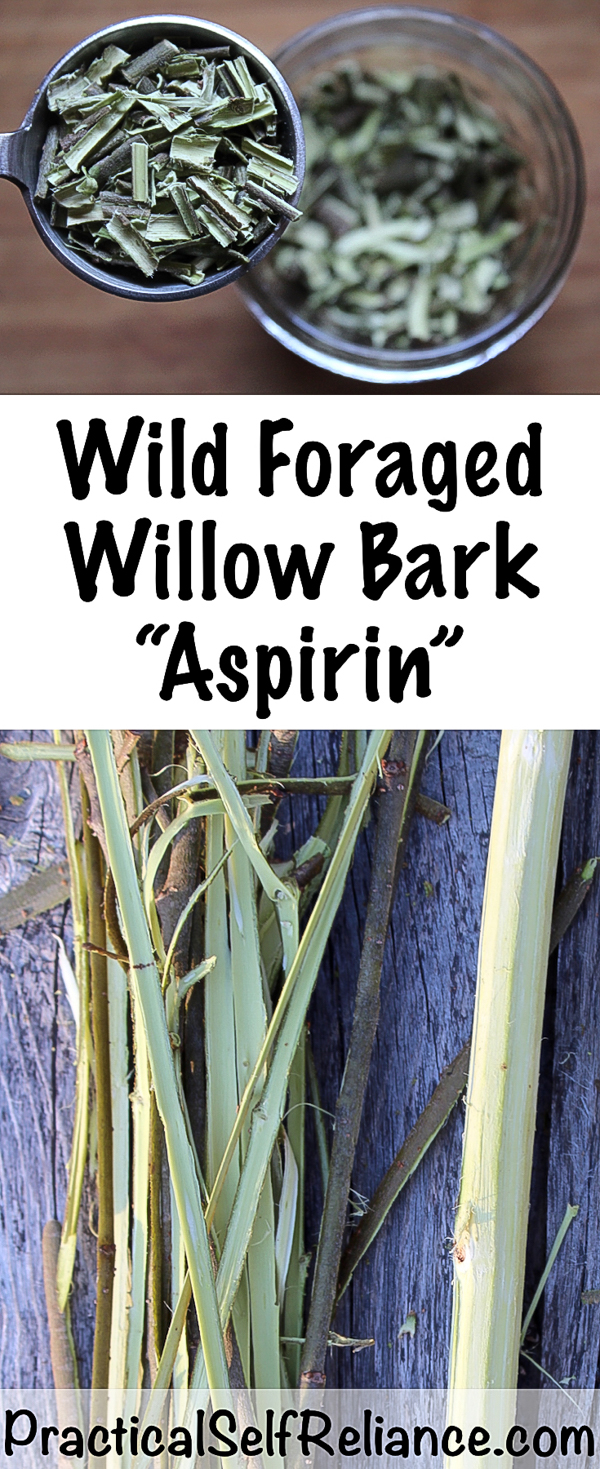


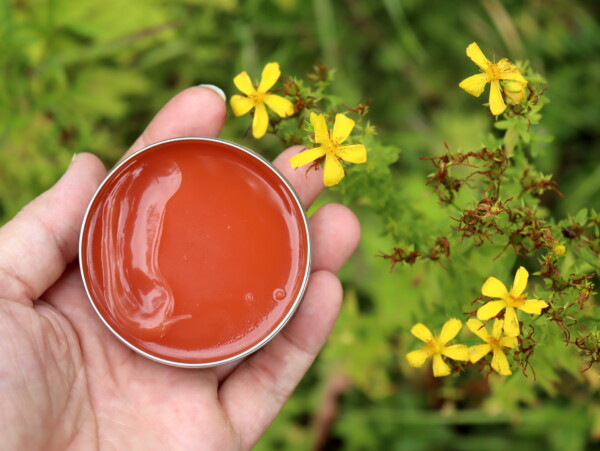
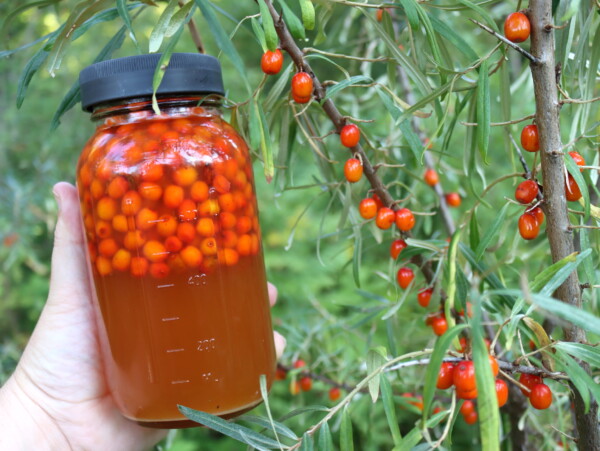
I live in sw texas and have been using willow baccharis (Baccharis salicina) for years to help people with migraines. It grows everywhere out here and out of desperation I tried boiling a large pan of it on the stove (since I hadn’t researched the type at the time I proceeded with extreme caution) It took me a while to identify it but it got rid of my migraine then and I actually don’t get migraines any more. I tried the treatment for my daughter in law and she no longer has chronic migraines. I know it sounds strange but we never did ingest it due to kidney issues and an abundance of caution. I make a concentrate of it now for topical application and grow a large patch of it that we can harvest and boil for general aches and occasional headaches.
That’s great information. Thank you so much for sharing.
I found this article very interesting. We are now in the last part (we hope) of what has been a mild winter. As soon as I see the change in the Willows that grow along a road gulley, I will try the tea, and maybe even the apple cider vinegar tincture. Thank you for this great article!
You’re very welcome. We’re so glad you enjoyed it.
Fell in love with your whole format. Direct with many great points of reference. Thank you for sharing.
Many blessings
You’re very welcome. We’re so glad you enjoyed it.
Is it safe for children? Like for example a 2 year old who has teething pain?
Aspirin is generally considered unsafe for children due to the risk of Reye’s syndrome. That said, that is something that usually only applies in the case of illness and fever. It might be acceptable to use it in very small amounts for teething pain, so long as there is no fever. I’m not sure I would risk it, though. Cold rags, alcohol, and even chamomile might be safer options. I do remember taking aspirin as a child, but they decided it was unsafe at some point in my early teen years.
Just yesterday, I cut myself a willow branch to try making clothes pegs and wondered what I could do with the bark! I hate wasting, even though it’s only some bark, lol. I’m going to dry some bark for tea! Thanks for the great article.
So glad that you enjoyed the article.
Great article, thank you. It’s difficult to find source that contain both preparation and dosage information, that is also well researched. I have seen that willow bark can be extracted into a liniment with rubbing alcohol or witch hazel, so I am trying it, I also added some hemp buds and cayenne powder. I do struggle with whether it will be effective for inflammation and pain because of the following I read – maybe you can help me here: Willow bark in its raw form contains salicin, but I read salicylic acid is the compound you want, which is by-product of digestion (at least naturally). This makes sense then that teas and tinctures taken internally would be converted. But If you apply the liniment topically, will it still work if salicylic acid isn’t first synthesized?
I’m not a doctor for sure, but based on my research that’s my interpretation. It’s to be taken internally because it needs to be digested to be effective. If you ever find anything to the contrary I’d love to hear it, because it’d be nice to have it work topically.
Ashley, thought you might be interested: I found this master thesis authored by someone at a university in Lithuania that actually used HPLC to analyze the amount of salicin derivatives of different species of willow collected at spring vs fall. https://publications.lsmuni.lt/object/elaba:1898377/1898377.pdf. It’s a lot of technical detail but if you just focus on the charts on pp.29 thru 37 then read the conclusion on p. 38, it’s very revealing. White willow actually has a low concentration of salicin relative to some other species, like purple willow and Japanese dappled willow (S. integra). I was thrilled because I have a giant hedge of the latter on my property. I’m tincturing some now. I tasted the bark and it is extremely bitter.
Here in Alaska we make a willow bark salve to apply topically for pain. We also use cottonwood buds and devils club salves for pain, arthritis and other ailments.
how?
We have Willow growing in the marsh lands and ditches all over northern Alberta.
In your article ( very informative and well written), you suggest harvesting willow bark in the spring when branches begin to break bud. Would that be when they are still in the pussy Willow stage or when the become catkins? In northern Alberta they are pussy willows while there is still a foot of snow on the ground. A happpy first sign of spring.
Thankyou,
Julie
Tree sap flows heavily from just before the time the buds begin waking up until all the leaves are mature. After that, it tapers off, but the cambium will still be useful all through the year. The wet cambium is easy to strip off–it’s really cool, actually, I have a tool for stripping cambium off fallen trunks of linden or ash; it’s just a cord with a handle on both ends, and I pull the cord between the solid wood and the cambium to make it slide right off.
Ifvyou make ut with ACV, do you make small amounts at a time or do you make a large jar full? Does it have a good shelf life
As an apple cider vinegar infusion it should last pretty much forever, as in, not spoil. I can’t say how long it remains potent, we always use it within a year. We do make a big jar at a time.
The vinegar route is an interesting one, because the step from salicylic acid to aspirin involves reacting with acetic acid, the main acidic ingredient in vinegar. I think the issue there, though, is that the compound you can get directly from the bark is salicin, which has to be processed by the liver into salicylic acid, which takes time (and is in the body by this point…so you can’t react it with vinegar). Side note, you can also use wintergreen oil (which can be hydrolyzed into salicylic acid but should not be taken directly because it is *seriously* concentrated), but the process using wintergreen oil involves various acids and bases and, well, it ‘s not exactly SHTF type of stuff.
Birch bark cambium has a wintergreen taste to it; it also contains a small amount of salicin. I wonder if there’s a relationship?
Would this work for heart patients. Would it replace the 81mg daily asprin?
I’m definitely not qualified to make any specific health recommendations. Beyond that, each species of willow varies in its content, so it’s really hard to pin that down. For minor pain, it’s easier to find your own dose through trial and error, but for something like heart issues I wouldn’t even know how to start.
The best option might be to consult a herbalist or naturopath, and then use a standardized capsule based on their recommendations (if they have any). Then at least it’d be a standardized dose, and you’d have an actual medical professional who may know if this is an appropriate substitute, and hopefully, they can give you guidance on dosage.
I agree on needing to go to a medical professional about this, but willow bark tea has been a traditional remedy for things related to all the same things we now use aspirin for. It absolutely does act on blood clotting factors in the same way aspirin does, which means it’s something that doctors need to know their patients are taking–like turmeric or Vitamin E, it’s something that can cause severe bleeding during a surgical procedure. A person taking aspirin under a doctor’s orders really shouldn’t be replacing it with a non-standardized herbal treatment.
However, if your family has a history of heart issues, and your doctor has NOT told you to take baby-aspirin, drinking a small dose of the tea on a semi-daily basis is not particularly different than ancestral practices and might be helpful. Basically, since science isn’t going to research something without a pressing reason, we don’t get to get clinical trials on willow bark.
@KT WOLF: WHAT, PLEASE IS “CAMBIUM”? It isn’t white willow bark, as it doesn’t come up in searches…..We are speaking here about White Willow Bark using it as an aspirin substitute, being that aspirin was discovered from it…..
Please don’t use terms that aren’t widely known without an explanation of the term.
Cambium is the material that is just inside the bark of any tree and is actually a pretty common term used in the herbal world. Some herbalists use all of the bark and include the cambium layer and others only use the cambium layer. We all do things differently and we’re always learning. If you’re unsure of a term, it’s easy enough to just ask for clarification so that we can all continue to learn from one another.
Cambium is the inner bark of any tree, the layer beneath the hard outer bark which carries water and nutrients up to the leaves and carries sugar down to the roots.
I would not use this as a substitute for 81mg aspirin unless lab tested. The salicylic acid would have to be concentrated for this. There are other components in willow bark that also have anti inflammatory actions but are not anticoagulant. Salicylic acid is not a blood thinner but interferes with one of the ingredients necessary to make a blood lot and thereby reducing the amount of time it takes to clot blood enabling the person to pump liquid blood ,instead of a clot, when next heart beat comes along
. This is a live saver, but can kill you if too low of a dose.
My late mom’s Aunt gathered the willow root only in the Spring and she harvested only the root that was underwater so she didn’t injure the bark of the tree. she didn’t chop up the bark, nor did she boil it…
we drank the concotion and didn’t have to add anything to it. it was not bitter. My people are Canadian First Nation.
Interesting, I haven’t worked with the root at all. Now I have another part to look into, thank you!
How would you go about making the oxymel with willow bark?
Good question. I’d infuse the willow bark in vinegar for a few weeks, and then mix vinegar and raw honey to your own tastes. I like more vinegar than honey, others like a 1:1 ratio.
Do you have a ratio recommendation for amount of vinegar to amount of willow bark? I really want to try this, thinking it will taste better, but also because in the original work on turning salicin into aspirin, acid was part of the process of extraction. So should I treat it more like using vinegar instead of water for a tea, or like using vinegar instead of alcohol for extraction?
I treated it like vinegar instead of alcohol for extraction and made it the same way as I make my tinctures.
Thank you! I’m finding your website pretty interesting. I’m a wild-foods forager in an urban environment, conducting experiments of all kinds throughout the year. Willow bark pain-reliever is something that several of my friends are interested in, and they seem to have left me to sort it out, lol!
I currently have one cold-steeping in water batch; one steeping in vinegar; and a couple more cups of cambium drying out so it’ll break easily. Yesterday I discovered that I could put the smaller twigs, thoroughly dried, into my blender and it would strip off the exterior and leave the twig inside behind. (The blender that takes abuse; I have another one that I treat more kindly.) Hoping that once the chopped cambium dries out, it will be friable enough to break up further in the blender.
Since we’re making syrup from box-elder maples right now, I used that in one of the batches. I mixed 1/2 unpasteurized apple-cider vinegar, 1/2 cheap cider vinegar, and about 2 tablespoons of syrup in with the willow bark. Will be interesting to see if the unpasteurized vinegar has enough live organisms to chew up the sugar in the willow bark and the syrup!
There are so many recipes online, and my herbalist friend had her own suggestion that was different as well. What I sense is that this use of herbs was something passed down through the hundreds of thousands of mothers who went before us, and somehow they knew all these things–perhaps they tasted the bark to get a sense of dosage before they decided how much to put into their tea? And depending on where they were in the world, they likely added other herbs to make the pain-reliever more effective. I wish we had all of that knowledge still … but alas, what remains seems to be diluted by the New Age crowd and their cultural appropriation in the 1980’s.
I like what you have written here–it’s straightforward and makes no assertions that lack evidence. Thank you!
I read somewhere else that willow bark, like aspirin, also works as a blood thinner. Do you have any idea of when that particular property was documented?
I did some research for you, but I honestly couldn’t find anything in my search. All I found was that you need to avoid taking willow bark if you’re taking blood thinners because of interactions. That interaction may be that it’s also a blood thinner, but they’re not specific. I’m sorry I can’t be more helpful on this one, but hopefully, someone else can comment and point us both in the right direction.
Nursing student here. Yes aspirin is an anti platelets drug, meaning it won’t allow your platelets to start the clotting process. It also affects the lining of your stomach making it dangerous for people with stomach surgery or ulcers. Lastly, never give this or asprin to children! It can cause Reye Syndrome which has a 30% mortality rate.
I would suggest just using asprin medication only when you need it and to avoid making your own. If you take this it is important to tell your doctors and have it in your phone in case you’re ever in an accident/bleeding ❤️
This study says willow bark has no effect on blood clotting. https://pubmed.ncbi.nlm.nih.gov/21226125/
Yes, aspirin is a bloodthinner , that’s why heart patients are told to take a low dose enteric coated aspirin to prevent blood clots to heart, lung andbrain. Stop before surgical or dental procedures. It is often prescribed along with prescription anticoagulant to reduce that dosage, but should ONLY be done under dr care who tests with lab work or you could risk hemorrhaging.
Great article. And I don’t find as many written records of oxymel use. I love it when I see it. Alcohol tinctures are great, and using vinegar as a medicine is a beautiful way to make it a “wholistic” medicine. Thanks so much
What is the shelf life of dried willow bark?
Good question and I’m not totally sure of the answer. At least according to a quick google search, dried plant bark used for medicinal purposes has a 1-2 year shelf life, but that drops to 6 months if it’s powdered.
This will be interesting to follow.
Great Job Ashley, very thorough. I played around with willow bark tea for pain and headaches a bit about 12 years ago but have not worked with it since. I know I have a lot to learn in my relationship with Willow as a medicine still so this post is great motivation. The vinegar extract is an interesting idea as well.
hey Chris Im a beginner herbalist and Im thinking about making some herbal replacements for things that may already be in the cabinet as family christmas gifts, did you find the willow bark to be an effective treatment? Thank you! Carlee
Wow you did a great job written this article, everything we need to know is there and so much more Thank you.
You’re quite welcome =)
I have a PUSSY WILLOW TREE /SHRUB on my property. Can I use the bark from small branches for the same medicinal use as weeping willow ?